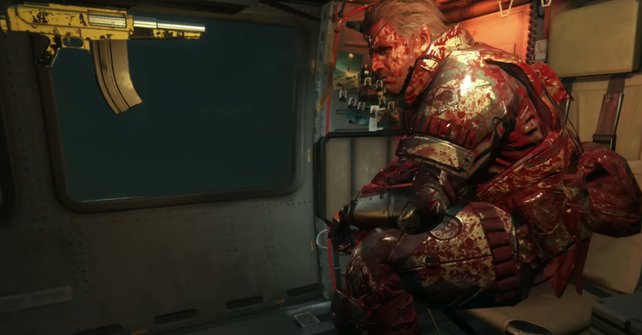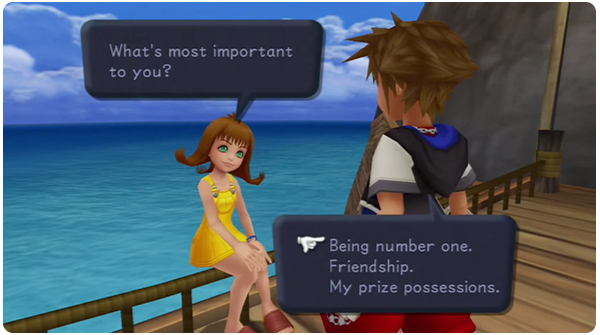Have you ever had something happen to you in a game and had no idea how it happened, with no clue of how to fix it? At some point, it will happen to everyone. Whether it’s somehow ending up caked in blood and sporting a horn or struggling to hit the next level far too soon, there’s usually a hidden reason these things are happening that is built into the game that the developers may not have spelled out. Here are some of hidden systems in games that can have major impacts on how they play out.
Metal Gear Solid V: The Phantom Pain – Demon Points

Metal Gear Solid V‘s Demon Points points are a hidden morality mechanic, opposite to Heroism. There is no mention of them in-game and I foolishly crammed all of my hard-earned resources into making a Nuke. The instant it was completed, my heroism took a sharp drop and I found myself suddenly caked in blood and sporting a horn as Demon Snake.
At 20,000 points, the player becomes Venom Snake. After 50,000, the player becomes Demon Snake (pictured). Trying to drag yourself back under the line is difficult. Wounding an enemy is 30 points. Killing them is 60 points. Developing a Nuke is 50,000 points. Fultoning an animal removes 30 points. Fultoning a prisoner or puppet soldier is -60. Several trophies remove larger amounts and disposing of other Nukes goes a long way toward getting you back toward Snake’s normal state. The quickest way to do it in the single-player campaign is Mission 23, The White Mamba. You can earn -2760 Demon Points if you extract all 20 child soldiers and the prisoner via Fulton and -240 for helicopter extracting Eli.
Kingdom Hearts – Opening Choices

Back in the first Kingdom Hearts, our young hero is given the choice of picking a sword, a shield or a staff to use during the tutorial. Whatever is picked is used as the weapon for the rest of the level. But what happens in the background isn’t revealed and has effects that last the rest of the game.
Depending on the player’s choice, skills are granted at different levels. A few minutes after this, the player is asked a series of seemingly innocent questions: “What’s most important to you?” “What do you want outta life?” and “What are you afraid of?” Depending on how you answer these questions, you will either level up at a consistent rate, faster at the beginning and slower later or slow at the beginning and faster towards the end.
Pokémon – Catch Rate

Fluffy little creatures bouncing around the world. Endless adventure awaiting. And some hardcore mathematics ticking away in the background. Feast your eyes on what makes those Pokémon shake and roll in those little balls.

I haven’t seen anything this complex since my brother earned his degree in mechanics. Here’s what it all means:
- “HPmax” is the number of hit points the Pokémon has at full health.
- “HPcurrent” is the number of hit points the Pokémon has at the moment.
- “rate” is the catch rate of the Pokémon.
- “bonusball” is the multiplier for the Pokéball used.
- “bonusstatus” is the multiplier for any status condition the Pokémon has (2 for sleep and freeze, 1.5 for paralyze, poison, or burn, and 1 otherwise).
Breathe deeply, we can get through this. What this boils down to is: hurt the Pokémon as much as possible without killing it and use a good Pokéball. Squeeze in a status ailment if you can. Also, spamming “B” definitely works.
Pokémon – EV and IV
The gift that keeps on giving, have you ever run across two seemingly identical Pokémon that have different stats? Like two Level 52 Butterfree that somehow have different Attack or Speed? That’s down to EV and IV.
EV stands for “Effort Value Points.” They determine what stats your Pokémon gets upon leveling up and are gained from battling any Pokémon you come across that award Experience points. For every 4 EVs you gain in a specific stat, you’ll gain +1 to your Pokemon’s base value in that stat. What this basically means is that if you battle 4 Patrat with your Tepig, Tepig will then gain +1 to its attack stat (because each Patrat gives +1 EV in the attack stat).
IV stands for “individual values.” Each of the six battle stats has an IV associated with it, with that IV coming into calculation alongside the Pokémon’s base stats and EVs to determine the actual stat number. An IV is calculated using the following formula.


Super Mario Bros. – Level Ending Fireworks

This one is much easier than the rest and almost purely for amusement. At the end of a level in Super Mario Bros., players are treated to a series of explosions that award them a small amount of points. Most people believe these are randomized, but it actually depends on the last digit of the number of seconds you have left on the clock when you finish the level. Specifically, the single units. If you have 231 seconds left, you get one. If you have 158, you get eight.
